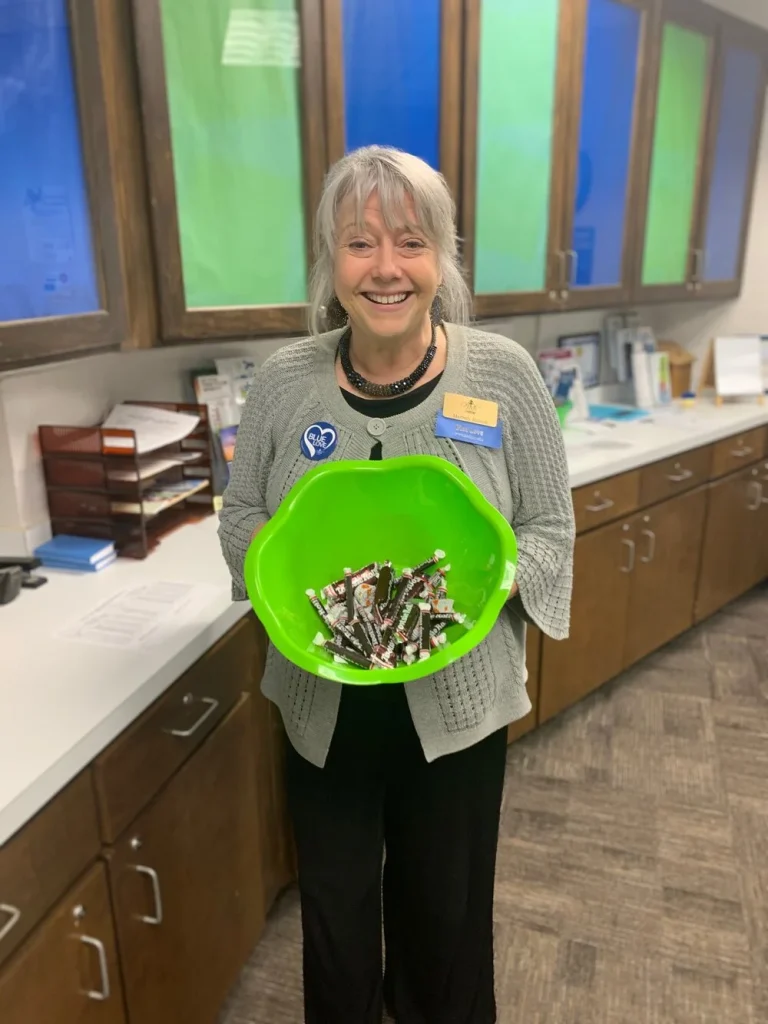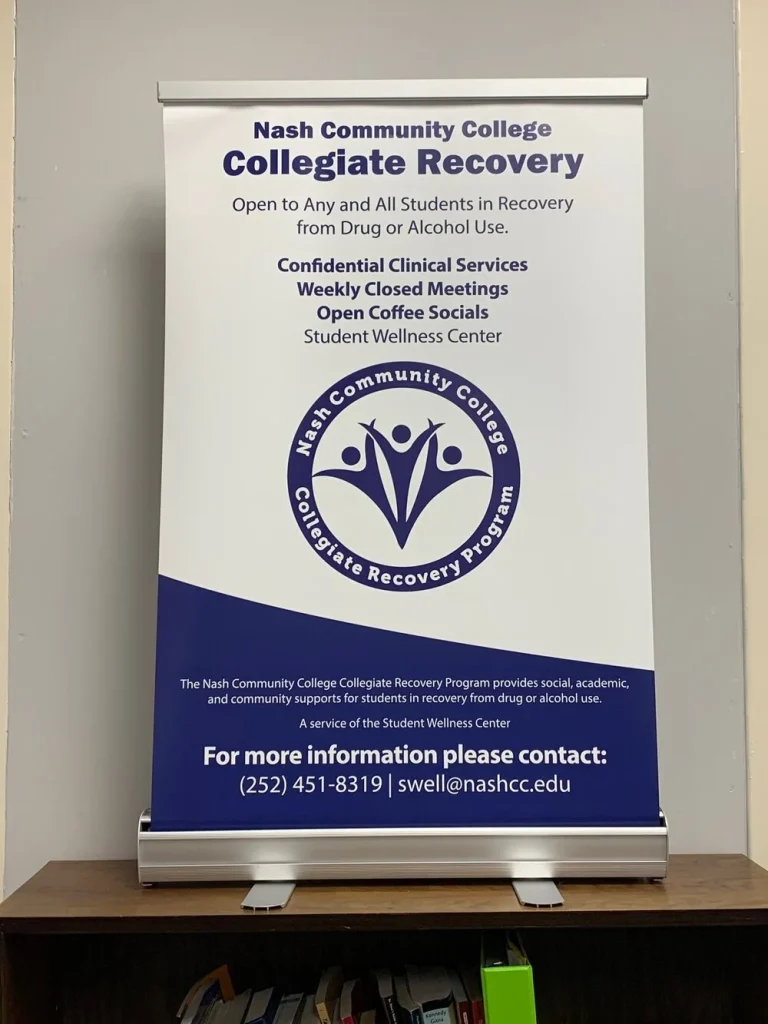



Nash Community College (Nash CC) takes a much broader approach to student retention than other campuses we’ve worked with, thanks to the passion of Marbeth Holmes, Dean of Student Wellness, and the campus-wide commitment to supporting the school’s Blue Love Fund.
Holmes started at the college in 1996 as an English Instructor, and the prevalent trauma and poverty written about in student essays prompted her to enroll in a Masters of Social Work degree at UNC-Chapel Hill, while continuing to teach English. She not only completed her degree, but also obtained her clinical social work and substance abuse licensure. In fall 2014, she helped the college launch their Student Wellness Center – the only one in the NC Community College System, and their nationally-recognized College Recovery Program kicked off the following semester.


The Student Wellness Center at Nash CC offers on-campus therapy to students, a Single Stop program that screens for SNAP benefits, Medicaid, and Medicare, a M.A.L.E (Men Achieving Leadership and Excellence) mentoring program, and a victim’s legal advocate for students experiencing bullying, domestic violence or sexual assault. The campus’s Blue Love fund started in partnership with Nash CC alumni Steve Fulton, compliments these holistic services by providing students with funding for basic needs.
“We know basic needs are one of the deficiencies for students, especially community college students, because much of their money is used for academics – tuition – and everyday living,” Holmes said. “Our Blue Love fund provides gift cards for gas, food and grocery stores, Walmart gift cards for personal hygiene needs or medications from the pharmacy.”
And then the Student Government Association continues spreading that love with their ongoing support of both the campus food pantry and Success Closet that provides professional clothes for interviews.
“That Blue Love culture – that ability to say we care about you, we want to know what is going on and see if we can help without being intrusive has really been a major success story not just for the students but also for the college …,” Holmes said. “The community college mission statement says that we are to empower the lives of our students not just with academics, and we certainly believe that’s what we do here in the Student Wellness Center and here campus-wide at the community college.”
“We have students that come in and say we wouldn’t have made it. I have students who come in crying and say they are ready to quit because they can’t juggle it all. We give them some coping skills and let them know we care and check in on them and follow up. Last year, we graduated over 100 students that we had served that would have not had made it. It’s really special.”
The impact of the Student Wellness Center and the Blue Love programs are undeniable. In their first semester in 2014, they saw more than 300 students. In the last five and a half years, they have served more than 4,000 students and identified almost $5 million worth of helping resources.
“The programs and services have evolved with the needs of our students,” Holmes said. “I like to say that we are a trauma-informed, resiliency building, data-driven service provider. And we definitely are a retention agent on campus, which is one of the reasons we are so happy to have Watermark (formerly Aviso Retention) come to Nash.”
“We are looking forward to seeing how Watermark empowers our student success. We do know already that all of these alerts that students are getting through Watermark are helpful. Students are saying “Oh I’ve got to go to class because I got an alert.” They are reaching out to Jamal Pitt, the director of our MALE program, for academic assistance when their grades slip. And having that early information enables our students to be proactive. It also enables us as a team across campus to be proactive to support our students before they get into crisis mode.”
Holmes is a firm believer that the Nash model can be duplicated on other community college campuses with a minimal amount of investment. All it takes is a willingness to write grants and to utilize the resources and human capital already in place.
“If we can, anybody can,” Holmes said.






























































































































































































































































































































































































Submit this form to schedule a meeting with one of our reps to learn more about our solutions. If you need customer support instead, click here.